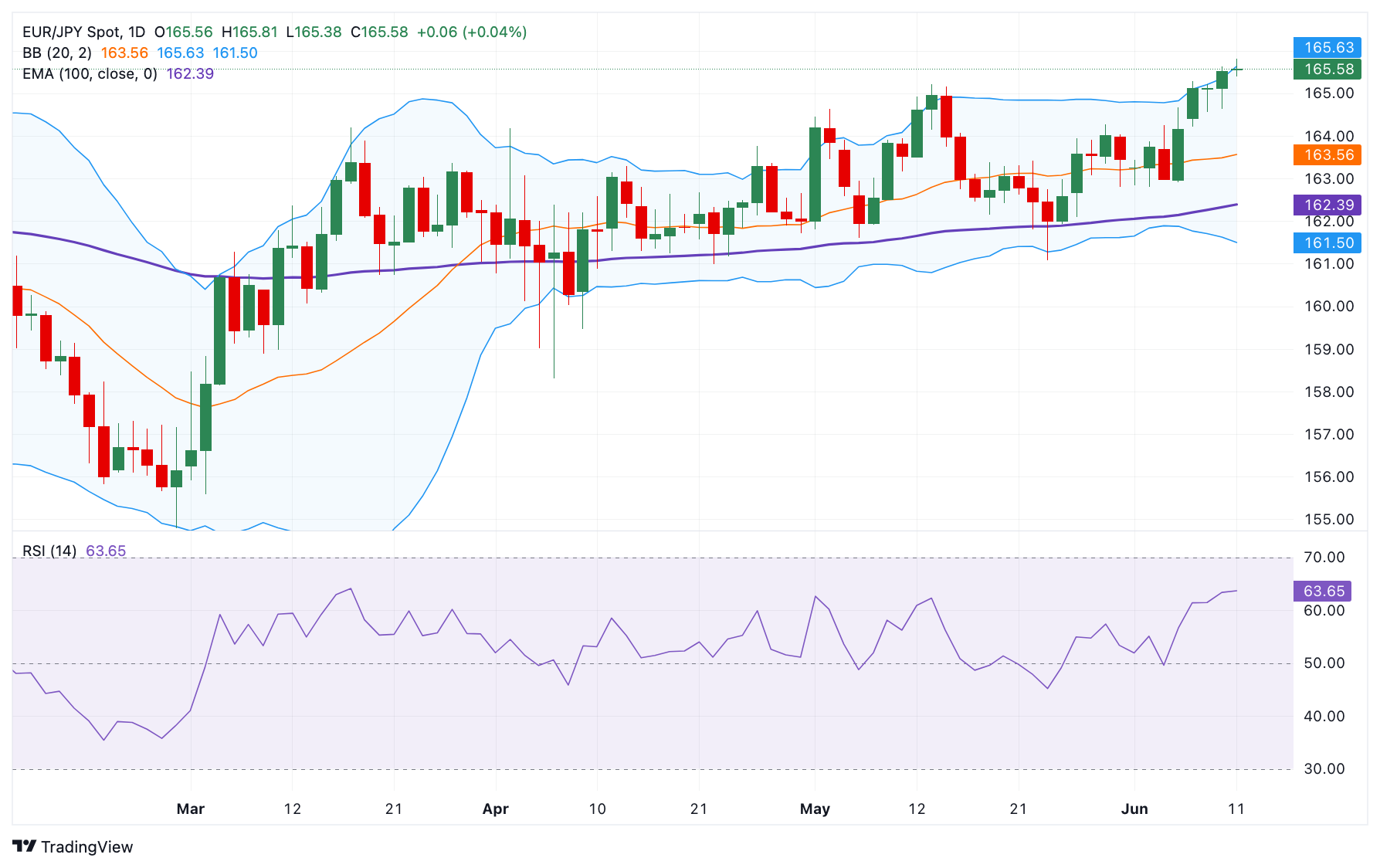EUR/JPY Price Forecast: Retains bullish bias above 165.50
- EUR/JPY trades with mild gains around 165.50 in Wednesday’s early European session.
- The cross maintains a constructive view above the 100-day EMA, with a bullish RSI indicator.
- The immediate resistance level is seen at 165.65; the initial support level is located at 164.55.
The EUR/JPY cross posts modest gains near 165.50 during the early European session on Tuesday. The Japanese Yen (JPY) softens against the Euro (EUR) amid the improved risk sentiment as positive developments from US-China trade talks undermine the JPY's safe-haven status.
Technically, EUR/JPY keeps the bullish vibe on the daily chart, with the price holding above the key 100-day Exponential Moving Average (EMA). Further upside looks favorable as the 14-day Relative Strength Index (RSI) stands above the midline near 63.50. This suggests bullish momentum in the near term.
The first upside target to watch for the cross is seen at 165.65, the upper boundary of the Bollinger Band. Further north, the next hurdle is located at 166.10, the high of November 6, 2024. The additional upside filter to watch is 166.60, the high of October 30, 2024.
On the other hand, the initial support level for EUR/JPY emerges at 164.55, the low of June 9. Any follow-through selling below the mentioned level could see a drop to 162.90, the low of June 5. The key contention level to watch is 162.40, the 100-day EMA.
EUR/JPY Daily Chart

Japanese Yen FAQs
The Japanese Yen (JPY) is one of the world’s most traded currencies. Its value is broadly determined by the performance of the Japanese economy, but more specifically by the Bank of Japan’s policy, the differential between Japanese and US bond yields, or risk sentiment among traders, among other factors.
One of the Bank of Japan’s mandates is currency control, so its moves are key for the Yen. The BoJ has directly intervened in currency markets sometimes, generally to lower the value of the Yen, although it refrains from doing it often due to political concerns of its main trading partners. The BoJ ultra-loose monetary policy between 2013 and 2024 caused the Yen to depreciate against its main currency peers due to an increasing policy divergence between the Bank of Japan and other main central banks. More recently, the gradually unwinding of this ultra-loose policy has given some support to the Yen.
Over the last decade, the BoJ’s stance of sticking to ultra-loose monetary policy has led to a widening policy divergence with other central banks, particularly with the US Federal Reserve. This supported a widening of the differential between the 10-year US and Japanese bonds, which favored the US Dollar against the Japanese Yen. The BoJ decision in 2024 to gradually abandon the ultra-loose policy, coupled with interest-rate cuts in other major central banks, is narrowing this differential.
The Japanese Yen is often seen as a safe-haven investment. This means that in times of market stress, investors are more likely to put their money in the Japanese currency due to its supposed reliability and stability. Turbulent times are likely to strengthen the Yen’s value against other currencies seen as more risky to invest in.

